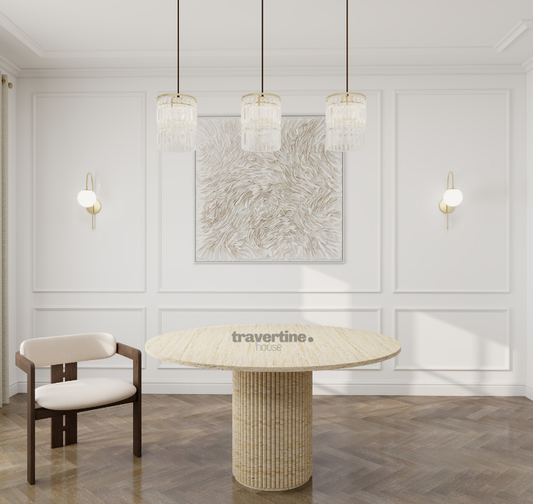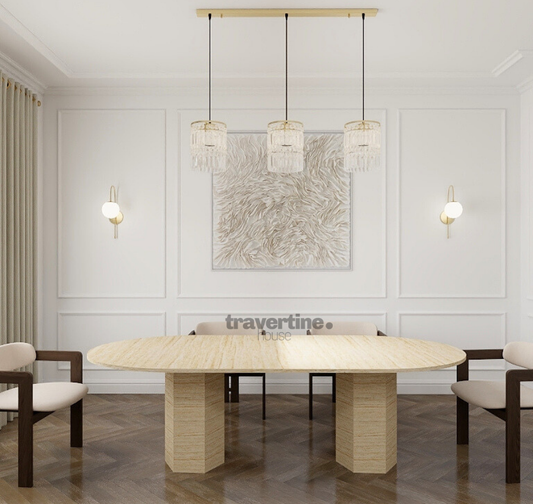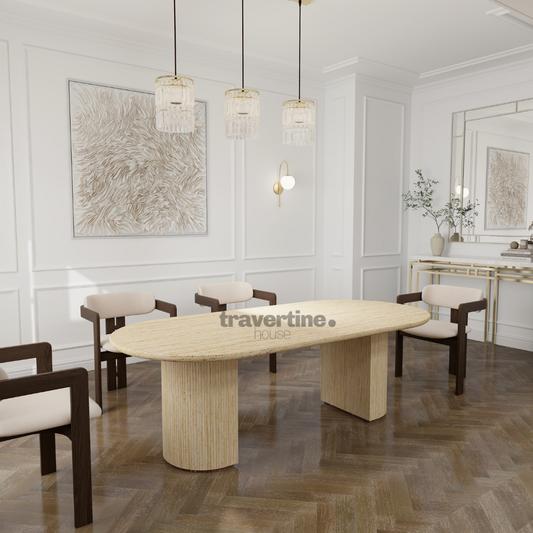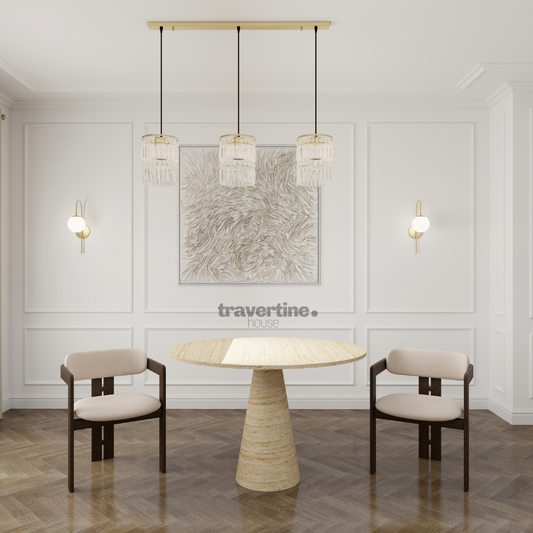Travertine, with its natural elegance and subtle texture, has become a staple in modern and classic interiors alike. Especially when used in dining tables, it adds a timeless, earthy charm that effortlessly blends luxury with warmth.
🪨 What Is Travertine?
Travertine is a type of natural stone formed by mineral deposits, often found near hot springs. With its creamy tones, textured surface, and unique veining, it is highly prized in architecture and furniture design. Unlike marble, travertine has a slightly softer and more porous finish, giving it a natural, organic look.
 🍽️ Why Choose a Travertine Dining Table?
🍽️ Why Choose a Travertine Dining Table?
Elegant Aesthetic:
Travertine dining tables bring a calm and luxurious feel to your space, complementing both minimalist and maximalist styles.
Durability:
When properly sealed and maintained, travertine is resistant to heat and scratches, making it ideal for everyday dining.
Versatility in Design:
From modern sculptural bases to rustic slab-top designs, travertine works in a wide variety of shapes and finishes.
Natural Uniqueness:
No two travertine slabs are alike. Each piece is a one-of-a-kind artwork shaped by nature.
🏡 How to Style Your Travertine Dining Table
Pair it with soft, upholstered chairs for contrast.
Add a minimalist centerpiece, such as a ceramic vase or candle holders.
Use warm lighting to enhance the stone’s natural tones.
Place it on a neutral or textured rug to define the dining area.

🧽 Caring for Your Travertine Table
Seal it regularly (every 6–12 months) to protect from stains.
Wipe spills immediately with a soft, damp cloth.
Avoid acidic cleaners—use pH-neutral products instead.
⚠️ Care Warning for Travertine Dining Tables
Travertine dining tables are sensitive to acidic beverages like cola, wine, and citrus juices. Always use placemats or coasters to protect the surface. Avoid placing hot objects directly on the table, as this may cause staining or marks.
Other than that, with proper care, your travertine table can last a lifetime.










